The subject of this multi-part series is a set of companies often described as Iowa’s most influential technology companies. The unusual mix of talented individuals whose paths crossed in academia and whose work product is used by the largest companies across America made this confluence possible. The series covers the multiple ventures, a series of wins, a small handful of missteps and their current state.
TL;DR: this series supports my original hypothesis that innovative entrepreneurship began decades ago in Iowa and continues to influence generations of companies.
The story begins in Iowa City but jumps quickly to the research park at the Iowa State University in Ames. The companies covered in this series include Engineering Animation, Webfilings (which later became Workiva), Next Level Ventures, and Vertex software. I will attempt to present their launch, growth, and scale that made these entities formidable companies.
Let’s begin with Engineering Animation, Inc.
Coming Together
Matt Rizai and Marty Vanderploeg met at Michigan State and moved to Iowa City as young researchers & entrepreneurs in the early 1980s. They were attracted to an effort underway with machine dynamics under the guidance of Professor Ed Haug of the University of Iowa and briefly joined the team in 1983. Though Dr. Haug’s team would go on to incorporate the startup as the University of Iowa Research Park’s first company, CADSI, Marty and Matt found other callings in Ames and San Jose, respectively, and left Iowa City in ‘84. I will revisit CADSI in a separate series on sources of public and private funding.

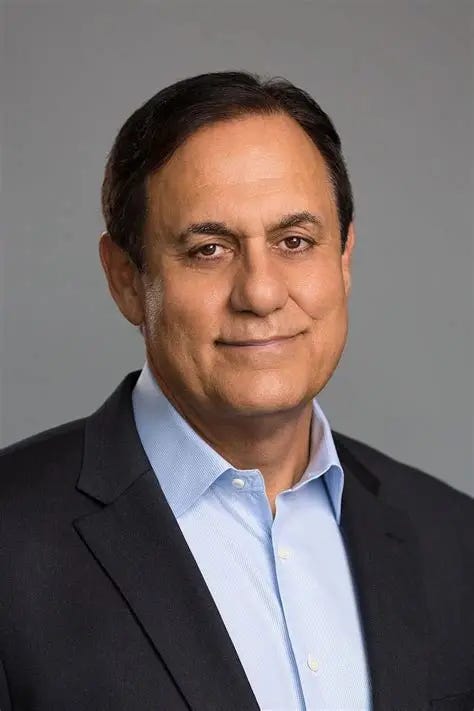
Marty had earned his Doctorate in Mechanical Engineering at Michigan State and was appointed to teach Mechanical Engineering at ISU. He was united with a Michigan State colleague, Dr. Jim Bernard, who was also teaching and chairing the mechanical engineering department. Academics by trade but entrepreneurs at heart, Marty and Jim along with graduate students Jeff Trom and Jay Shannon continued to ideate something of their own.
The mid-1980s were heady for new technology companies. The team found itself gravitating toward modeling and design companies and research allowed them the freedom to think about possibilities in modeling and design. The world of resources for young entrepreneurs was limited in Iowa but the group had access to the university secret weapon – the ISU research park – where, in 1988, they settled into a small office while continuing to teach.
The office and team grew into a 20x20 space. Graduate students joined the company on temporary bases and built the earliest parts of the company. The founders bootstrapped their vision, used available computer time, and continued to develop and build upon their vision. The company formally incorporated as Engineering Animation, Inc. (EAI) with Ames as its headquarters. Matt Rizai was recruited to return to Ames from CA, and he joined the team as the company’s CEO.
The visualization technology
You’ve certainly seen a legal or police team show a model of an accident or crime scene on TV. Models provide a bird’s eye view, rotate for a 360O perspective, show key elements the storyteller wants to convey, and help simply and visually convey a complex set of events. This was the team’s earliest market. Their commercial product, VisLab, launched in 1994.
The computer industry, as we know it today, was still in its infancy at that time. The first commercial browser was created by Marc Andreesen at Carnegie Mellon University the same year, Internet access still meant CompuServe or America Online, Windows 95 was a year from rocking its start. Steve Jobs was at NeXT, and Apple Computer was struggling.
Computers capable of rendering professional video and animation were largely limited to those from Silicon Graphics, Inc. Though video games were beginning to leverage hardware for smoother graphics (NVIDIA’s humble beginnings), commercial software was limited to Unix, specifically from Silicon Graphics.
The EAI team’s expertise in modeling and visualization, coupled with their willingness to jump to using SGI’s hardware capabilities to manipulate graphics was a differentiator as much of the competitive field still relied upon software to manipulate graphics. Today’s gamers and modeling software use the very capabilities from increasingly powerful graphics cards to deliver performance and smooth motion.
Early Uses
Though attribution amongst the videos now archived on YouTube is rare, EAI’s visualization was used in two highly public incidents – the Oklahoma City bombing in 1995 and the 1996 TWA 800 crash just east of New York City in 1996. Visualization’s role was important for different reasons in the two cases –
The NTSB reports of the TWA crash fought two forces – the complexity of the crash which involved an explosion in the central part of the aircraft, likely caused by a spark igniting fuel vapors. The aircraft’s breakup into three main parts and their varied trajectories toward the widespread debris filed in the ocean couldn’t be easily explained in words. The second force was the conspiracy theory of a terrorist attack via a missile. A video animation, coupled with radar data were able to demonstrate the physical forces, fireball and the breakup’s aftermath clearly.
Similarly, the Oklahoma City bombing, an act of domestic terrorism involved detonation of a truck filled with explosives in front of the Federal building in Oklahoma City. Here, a visualization captured the environment and surroundings pre-attack, detonation, the effects of the explosion and their aftermath.
Warning – the videos are sobering reminders of recent history.
TWA 800: CIA animation: "What did the eyewitnesses see?"
Oklahoma City Bombing-Engineering Animations
The Vis-Suite
The VisLab product continued to be enhanced organically within EAI and inorganically through acquisitions throughout the company’s life. Its primary customer base increased well-beyond the days of early modeling by the legal profession into engineering departments who used it for digitally mocking-up models, simulating products, factory simulations, product presentations, configuration assistance, maintenance and training.
Keeping up with the rapidly shifting technology landscape of the mid-1990s, as the world accelerated toward a potential Y2K apocalypse, EAI expanded its footprint to support other flavors of Unix and the Microsoft Windows NT (now Windows server) platforms. The product names grew into a suite consisting of VisView 2D, VisView3D, VisView Docs, VisView Web Client, VisView Configure, VisView Print and VisView Convert. The suite further expanded to VisFactory and the company’s professional services team added consulting and implementation services.
The Gaming Market
The company formed a new division, EAI Interactive, in 1996 to broaden its scope into gaming. It acquired Software Arts International, a Salt Lake City-based game development company. In an unprecedented and unusual move, it allowed EAI Interactive to operate independently. The company worked with Disney Interactive, Hasbro Interactive, Crayola, K’NEX, Sierra Online, and Southpeak Interactive to produce a diverse array of game titles such as Championship Bass, A Bug’s Life, Toy Story 2, Barbie Magic Hair Styler and nearly a dozen others. - Engineering Animation Inc. - MobyGames


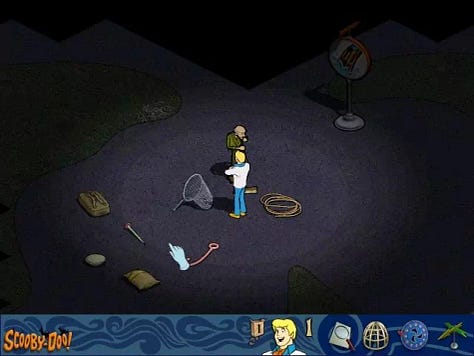
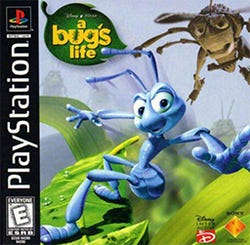
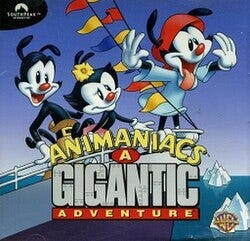
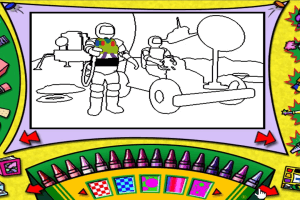
The combined experience of visualizations and gaming also allowed the company to expand into education through partnerships with Elsevier Science, McGraw Hill Higher Education, and others to produce interactive textbook and reference materials.
As the world hadn’t quite fully switched to electronic delivery, a few of its products, especially those in the consumer markets were delivered via CD/DVDs directly and via publishers.
The need for Scaling Capital
In my discussions with Marty Vanderploeg and online archives, I found a profitable and growing company, with a technically talented workforce, often available next door at Iowa State University but increasingly from around the globe. The company grew from a reported revenue of $993,000 in 1992 to nearly $10M in 1995. Consistent with technology industry practice, profits were invested heavily in R&D and growth.
As company filings with the SEC show, customer accounts receivable grew in parallel to the company’s growth. Some larger corporate customers began taking longer to pay, necessitating financing options. Though the company had successfully used state funding sources (Iowa Product Development Fund) as well as the Small Business Administration, the level of funding available from either was insufficient.
They passed on Iowa’s nascent venture capital community due to unfavorable governance and economic terms. A private placement to seek private markets found limited success (an unnamed Nebraska angel investor who did purchase equity in the private company, however, got quite lucky with his returns).
The remaining and available option in 1996 was to access public markets. Although regulations enacted since the Enron debacle have made it cost-prohibitive for companies with under $150MM in revenues to access public markets, EAI was able to move toward an IPO with approximately $10M in revenue. Consistent with technology companies of the time, it listed its stock on NASDAQ and started trading on Feb 29, 1996, at $18 per share. With nearly 2.67M shares traded that day, the company was able to ensure continued growth.
A 7-yo Iowa company with $10M in revenue was valued by the stock market at $121M.
Acquisitions
In addition to the organic growth, the company also acquired a number of complementary organizations to serve a broader range of customers and/or add to its own products. Company such as DELTA Industrie Informatik GmBH complemented VisProducts and VisFactory to serve manufacturing customers. Variation Systems Analysis, Inc., Transon Technologies, Inc., Sense8 Corporation, Rosetta Technologies, CimTech, Inc. and others added to the global company’s portfolio of products.
Market forces
EAI’s products, however, were not the foundational CAD products used by their customers. They were add-ons that allowed visualization of the data and models designed in CAD. Competitors like Dassault, Parametric Technology Corporation (PTC) and Unigraphics were all foundational to design and likely eyed the Ames company with a wary eye.
Gene Amdahl linked the phrase “Fear Uncertainty and Doubt” (Fear, uncertainty, and doubt - Wikipedia ) and its associated acronym, FUD, in 1975 to technology. In EAI’s sphere, FUD began to seep into their customers. Whispers spoke of competitors, upon whose products EAI’s visualization was built, were developing their own, integrated visualization software. Though this vaporware would not become real for over three years, its impacts were felt rather quickly.
A major misstep
A 10-year record of growth and success, however, met bad luck on September 30, 1999. The Des Moines Register reported that the company would restate its earnings down by $7M for the previously closed second-quarter 1999, and that third-quarter earnings would be lower by 40-50% below analysts' expectations. The impact of this news on 9/30/99 was punishing on the Iowa darling’s stock price.
Luckily, management, customers, employees and many shareholders were not buoyed by the news, and the aggregate effect was a drop in stock price of nearly 45%, a different future was developing.
Epilogue
Unigraphics Solutions Inc (UGS) is one of the previously mentioned producers of CAD and product development software and had already been working with EAI. The two companies’ products were complementary and already favored by customers. UGS strategy called for creating collaborative product development technologies and saw the opportunity to accelerate its strategy via an acquisition. This was further aided by UGS’s push toward the growing influence of the Internet on expansion dreams.
On September 5, 2000, UGS, itself a publicly traded provider of collaborative product development software announced its acquisition of EAI for $205M in cash (sec.gov/Archives/edgar/data/1055246/000095012400005424/c57319scto-c.txt), an attractive 24% premium to the stock’s market price.
A series of acquisitions followed and UGS was acquired by EDS, merged with another competitor, SDRC, and ultimately acquired in 2007 by Siemens AG.
…or was it an epilogue?
This team, however, wasn’t done. Barely in their 40s, the academic and business colleagues of the previous decade had exhausted blood (at least in the stock markets), sweat and tears. They had built a company in the nascent ISU Research Park, grown it to international customer bases, grown from the handful of employees in a 20x20 space to over a 1,000 FTEs, and accessed public markets. For many entrepreneurs, they could have retired with this exit or returned to teaching.
They didn’t. And their story continues in Part II. I hope you subscribe and return as there is more to come.
I am a proud member of the Iowa Writers Collaborative and the Iowa Startup Collective. Each writer is independent and publishes via Substack across Iowa and I encourage you to explore my fellow writers’ amazing work.






That was a very informative blog post! Thank you 🙏
Marc Andreesen and Eric Bina co-created Mosaic at the University of Illinois. Or were you referring to Netscape?